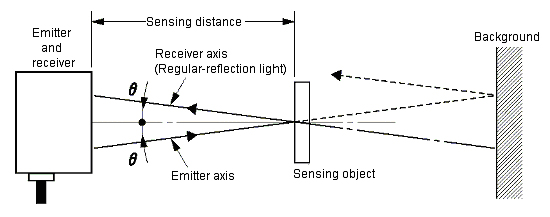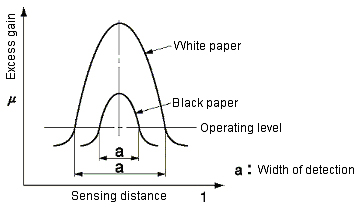By what principle is the limited reflective Photoelectric Sensor detected?
In the optical system of the limited reflective sensor, only the regular reflection of a certain limited distance is received because the emitter axis intersects with a receiver axis in the same inclination θ.

In the optical system of the limited reflective sensor, the emitter axis intersects with a receiver axis in the same inclination θ as shown in figure.
Only the regular reflection of a certain limited distance is received with such an optical system.
Therefore, only the object within the range where the emitter axis intersects with a receiver axis will be detected.

Moreover, the distance that reaches the peak of the excess gain never changes by the difference of the color because it uses the regular reflection.
(However, the width of detection shortens by the amount of light reflection decrease.)